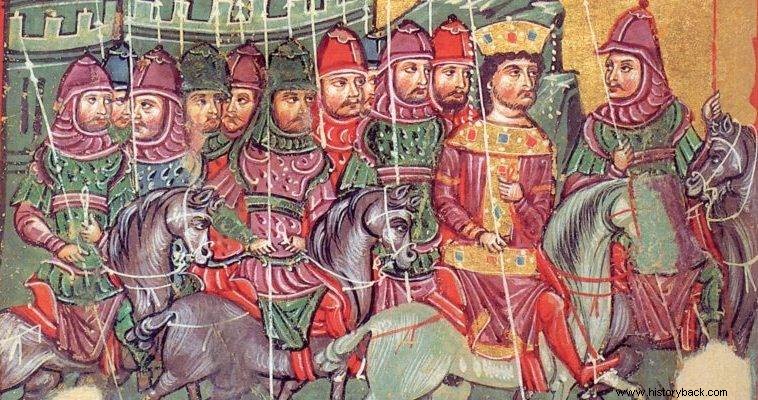
In any case, within only 20 years of the death of Michael VIII the possessions of Asia Minor, for the most part, had been lost to the Empire, with the exception of the fortified cities, which were however excluded from the Turks and there was a kind of loose siege.
In 1301,at the battle of Vafeos, near Nicomedia, the Empire managed to send only 2,000 men to help this great Asia Minor city from the threat of the Ottomans, under the Great Company Commander George Mouzalon.
Half of Muzalone's men were Alan mercenaries. The Turks fielded only 5,000 men in battle. The Byzantines were defeated, as the Alans did not even fight . The losses were not great, as the defeated fled to the fortified Nicomedia.
This battle should not, in theory, be considered important. But it is. According to Turkish historians, it was this victory that "gave birth" to the Ottoman Empire. It was the first victory of the Ottomans against the imperial forces.
The easy victory filled the Turks with self-confidence and contempt for the opponent . However, it is indicative both of the weakness of the Byzantines, but also of the Ottomans, who also did not have strong forces. If the Empire had, at that time, 10,000 worthy soldiers, today's story would be different.
Such was the decline of the Empire that it was able to send only 2,000 men against the Turks to defend the ancient metropolises of Hellenism in Bithynia.
Byzantine sources state that, in 1320, the emperor Andronikos II was forced to impose a particularly heavy tax, with the money from which he aspired to form a military force of 3,000 men. Of these, 1,000 would operate in the Asia Minor possessions and the rest in European territories.
However, even this was not achieved, as the emperor's plans were overturned by his conflict with his grandson Andronikos III. During its duration the Asia Minor possessions were completely left at the mercy of the Turks. While the two Paleologians were fighting for the possession of the throne, the Turks advanced unmolested. In 1326, the Ottoman Turks conquered Bursa, after a 10-year siege, and made it their capital. Having now a stable base, they continued their destructive raids in all the Byzantine regions of Asia Minor.
Battle of Pelekano
Faced with these developments, the new emperor Andronikos III decided to personally campaign against the Ottomans. The emperor, together with the Great Domestic John Cantacuzinus, crossed into Asia Minor, at the head of only 2,000 regular soldiers and an unknown number of irregulars. This army, on June 10, 1329, clashed with 8,000 Ottomans under Sultan Orhan. The Turks sent 300 of their light cavalry to harass the Byzantines.
The whole day went by in a flurry, without anything of substance. When the Byzantines considered that they had achieved their purpose, which was no other than to carry out a form of military demonstration, they decided to withdraw. But then the Turks attacked them and wounded the emperor in the leg. Andronicus' injury caused confusion and panic.
The next morning the Byzantines, badly – badly, retreated in four phalanxes. The Turks pursued them and caught up with one of them, which they literally destroyed, conquering the Byzantine camp as well. The Battle of Pelekano, as it was called, from the nearby fortress of the same name, (also known as the Battle of Philokrine, from the nearby, also small town of the same name) was the second and last attempt of the Byzantines to face the Ottomans in the field of battle in Asia Minor.
As in the battle of Vafeos, the Byzantines were defeated, as they had only 2,000 actual soldiers, against four times as many Turks. After this defeat the fate of Asia Minor was sealed. The Asia Minor populations completely lost their trust in Constantinople and many of the inhabitants of these regions submitted to the Turks and fought on their side . The Turks followed the Byzantine system of welfare, distributing timiras to their vassals, among whom were many converted Byzantines.
